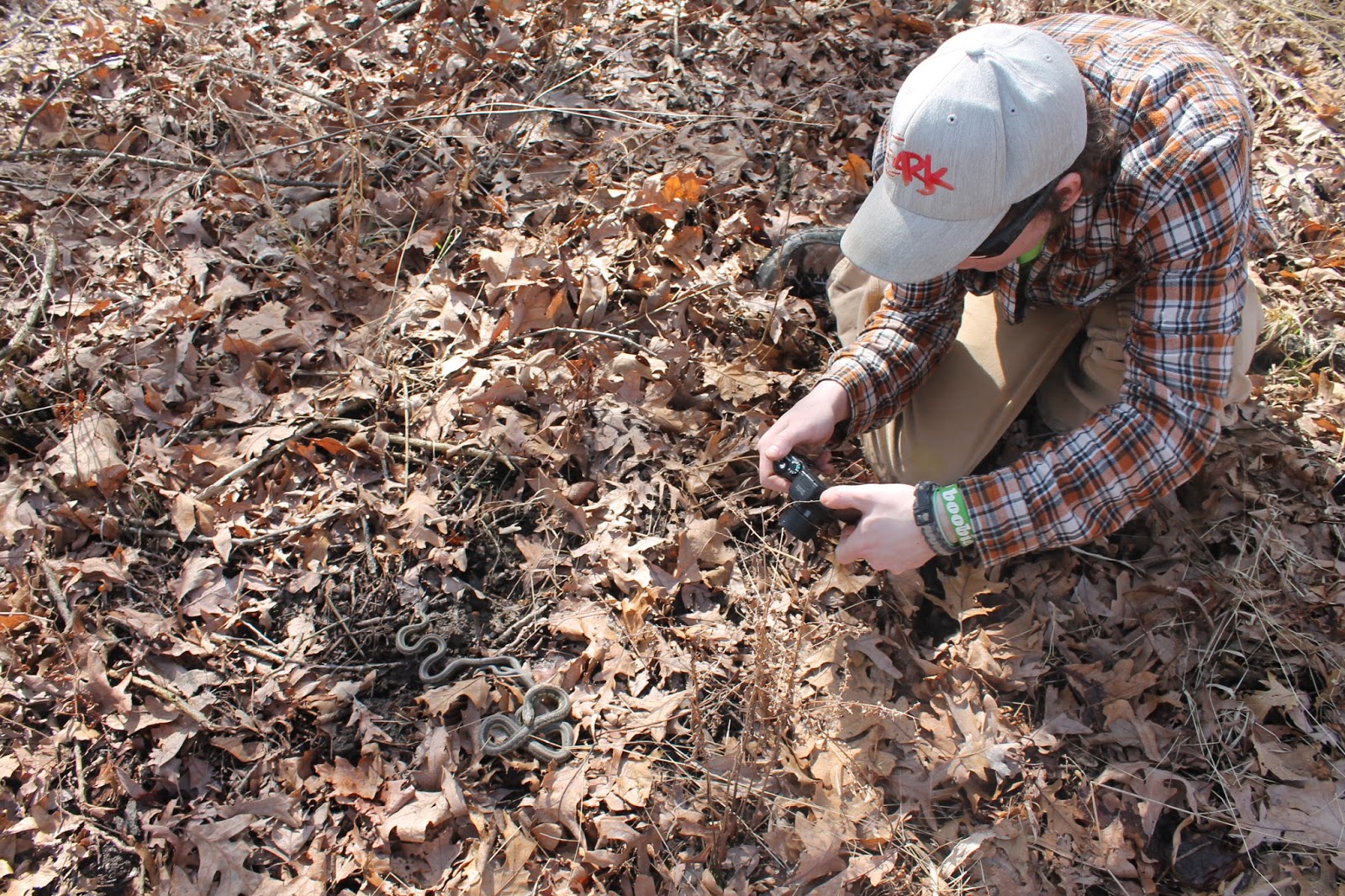In the meantime, there is another early spring breeder that relies not on precipitation but only a warm sunny afternoon to get in the mood. The Eastern garter snake (Thamnophis sirtalis "semifasciatus"), or common garter as they are known, is bold enough to rise from its winter dens in order to mate during late winter or early spring, even if that window of warmth lasts but a few hours. They are often observed on the crawl even as snow surrounds them. Mating seems to be the stronger of two motivations after snoozing for a few months - the other is eating. One might assume that the males would require some sustenance before their hunt for females, and certainly, a male garter likely wouldn't turn down a worm or frog if he happened across one in his search. But I have repeatedly witnessed the Eastern garter snake in copulation while still covered in mud, a sign that leads me to believe that nothing more than warmth is needed in order to trigger reproductive behavior. In my experience, I've found that males become active earlier, followed by the larger females, who release pheromones that entice the males.
The females' pheromones are released as they crawl about after "waking up". They leave a pheromone trail that can attract more than one male. In some regions of North America, the amount of males pursuing a female can be so great that the result is an aggregate of males on one female in what is termed a "breeding ball". It is quite a sight to see.
On Sunday, March 15th, following a bi-annual reptile and amphibian conference (NARBC), my nephew Jeffrey Peffers and I met up with a fellow field herper from LaSalle County, Matt Bordeaux, and his wife and young daughter. We wanted to try our hands at finding some amphibians at a nearby preserve in Cook County. The conditions were ideal, with temperatures in the upper 50s to low 60s and partly sunny skies. The only thing against us was the fact that it had not yet rained. So, we searched high and low (well, mostly low) for salamanders, but did not find one. Shortly after splitting up, I caught a breeding pair of sirtalis in a sunny spot on the woodland floor. They represent the first herps of 2015 for me, the first since December 23rd, and the first snakes since I believe October 19th.
The scene as I approached.

A closer look.

Oftentimes, snakes don't seem to be distracted by stimuli while breeding. It's like they enter a trance, during which they are vulnerable to predation. This pair let me get up very close. I even brushed against them in order to move a few leaves out of the way for a photo, and they hardly moved a muscle.
Matt shooting the breeding pair.
Matt showing his daughter the snakes. Matt hardly ever (if ever) goes herping on his own. He is typically expected to be in the presence of his wife and daughter. I have a ton of respect for that. There are far too few people out there who share their love for nature with kids.
This is the third garter snake we saw. This one is in a periscoping position. It is believed that this position essentially helps the animal get a better view of what's around. It's a common behavior seen mostly with diurnal (day-active) snakes, but it isn't always easy to document, since a snake in this position is extra alert and easily startled. This male, however, was on a mission. Matt and I speculated that maybe it sensed the pheromones from the female we had just observed minutes before - in "adjusting" the set for a better shot, it is possible some of the pheromones transferred to my hands. This one was curious and followed me briefly before slithering alongside a log in the opposite direction.
Eastern garter snake habitat.
Hopefully, it's just a matter of time before this dry, silent spring is interrupted by a good rain, and then, by the sounds of chorus frogs at every vernal pool that can support them.





No comments:
Post a Comment